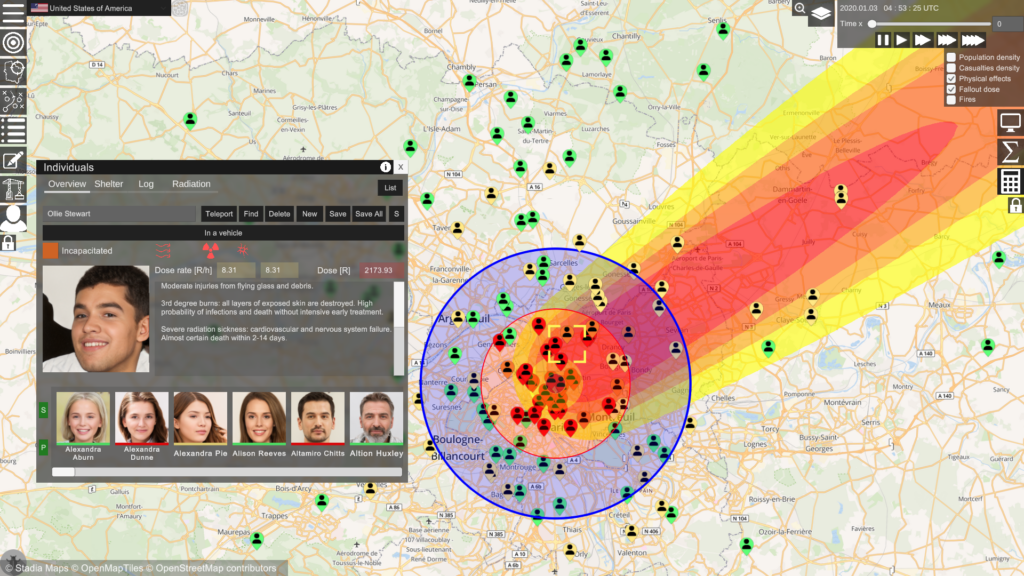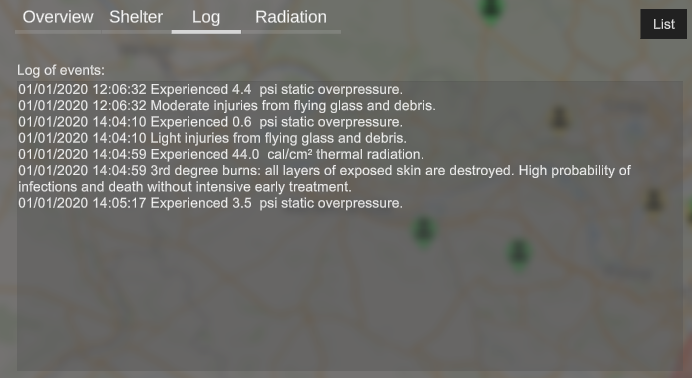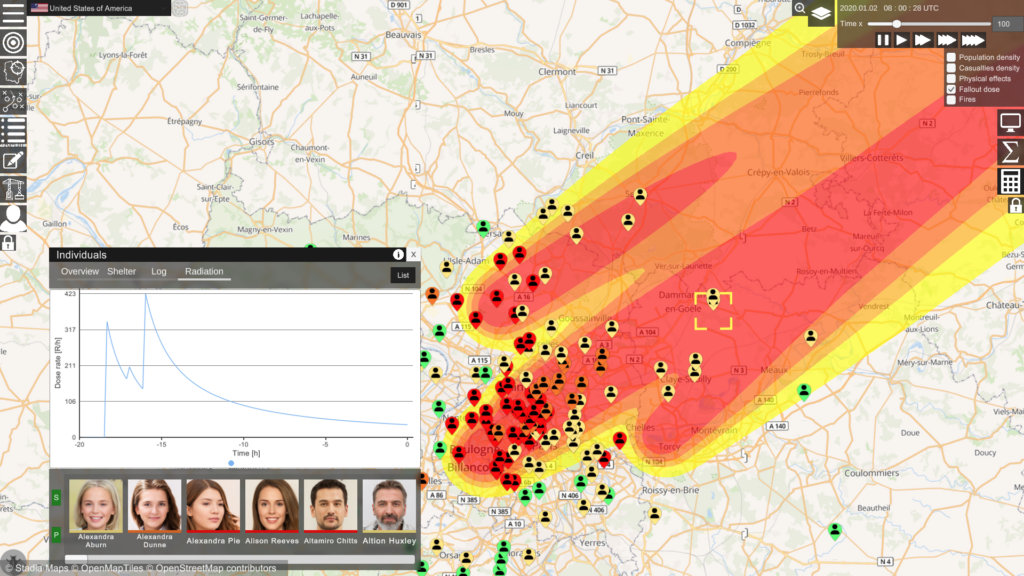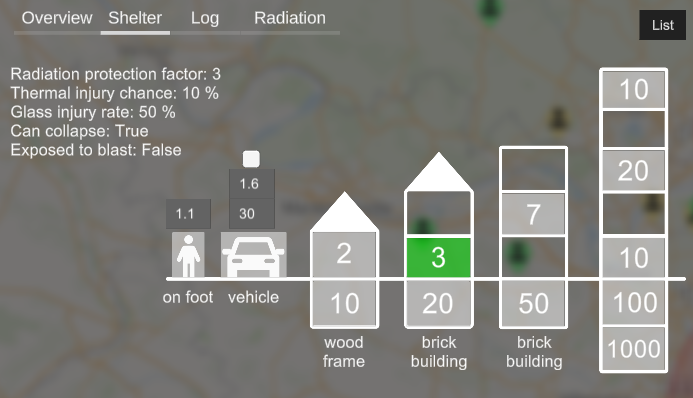Simulating the effects of nuclear weapons on individual humans
The nuclear war simulator can be used to simulate the effects of nuclear weapons not only on the population density but also on individual humans. You can place individuals on the map, move them on foot or in a vehicle and let them take different kinds of shelter. Each individual will record the physical effects of nuclear weapons and estimate the injuries leading to incapacitation and death. This feature can be used to explain and evaluate different survival strategies during a nuclear attack, like shelter-in-place or self-evacuation.

The injuries received by an individual are displayed as small icons and as detailed text describing the injuries. Depending on the injuries the individual will be incapacitated and die. Incapacitation from radiation can be delayed by hours or days depending on the dose received. The total received dose to the body is displayed together with the dose rate received in the shelter and in the open.
The effects of nuclear weapons experienced by an individual are logged with a time stamp. As can be seen in the example below, the time of the blast received is delayed by multiple seconds because the blast wave is traveling much slower than light.

An individual can be selected on the map or from the list. There is an option to save and load individuals with a scenario or to save them permanently so they are loaded with each scenario. The last option is ideal if you want to place yourself, your family, and your friends into the simulation.
Fallout
The time-resolved radiation dose rate from fallout is recorded and can be displayed. In the example below, you can see how radiation from 3 different clouds arrives at the position of the selected individual and then decays.

Shelter
The individuals can take shelter and have some protection from the different effects of nuclear weapons. If the person is in a vehicle or in a building there is some protection from the effects like overpressure, thermal radiation, and fallout. Different types of shelters offer different protection factors from radiation (the large number displayed on the shelter). If the person is outside or if there are windows, the person has a chance to be exposed to thermal radiation or to injuries from flying glass and debris. Buildings have a chance to collapse from overpressure.

Movement
Individuals can move on foot or in a vehicle. The waypoints can be queued to create a path following the roads. There is a setting to define the movement speed and the radiation protection factor offered by a vehicle.
When moving, the radiation from the fallout will be recorded in a time-resolved fashion. This allows the explanation and analysis of different survival strategies. The typical recommendation is to hide in a shelter for multiple hours or days and then evacuate. Trying to self-evacuate right away may expose the individual to lethal doses of radiation.

